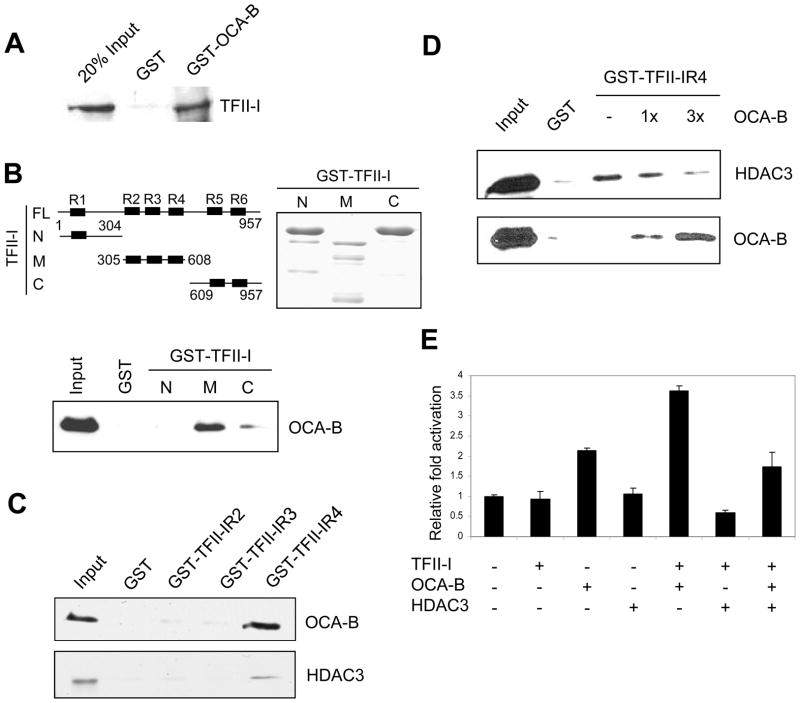Figure 2.
TFII-I interacts with OCA-B through its conserved I-repeat. (A) Interaction of OCA-B and TFII-I. A purified recombinant TFII-I protein was tested for binding to GST or GST-OCA-B proteins, and bound proteins were detected by anti-TFII-I immunoblot. (B) The middle part of TFII-I (M) interacts with OCA-B. Schematic diagram of full-length (FL) and mutant (N, M, C) TFII-I (top left). Purified GST-tagged TFII-I proteins from bacteria were analyzed by SDS-PAGE and Coomassie blue staining (top right). Recombinant OCA-B proteins were tested for binding to GST or GST-TFII-I mutants, and bound proteins were detected by anti-OCA-B immunoblot (bottom). (C) R4 repeat of TFII-I interacts with both OCA-B and HDAC3. Recombinant OCA-B and HDAC3 were tested for binding to GST and GST-TFII-I mutant proteins, and bound proteins were detected by anti-OCA-B and anti-HDAC3 antibodies, respectively. (D) OCA-B and HDAC3 compete for binding to the R4 repeat of TFII-I. A constant amount of HDAC3 and increasing amounts of OCA-B (0, 1x, 3x relative molar ratio to HDAC3) were tested for binding to a constant amount of GST-TFII-IR4, and bound proteins were detected by anti-OCA-B and anti-HDAC3 antibodies, respectively. (E) TFII-I enhances OCA-B–dependent IgH promoter activation. 293T cells grown in 24-well plates were cotransfected with 20 ng IgH promoter (M17056, −154 to +167bp relative to TSS) luciferase reporter, 1 ng pRL-CMV control vector and 20 ng each of vectors expressing TFII-I, OCA-B and/or HDAC3. Data are presented as the mean ± SD.

